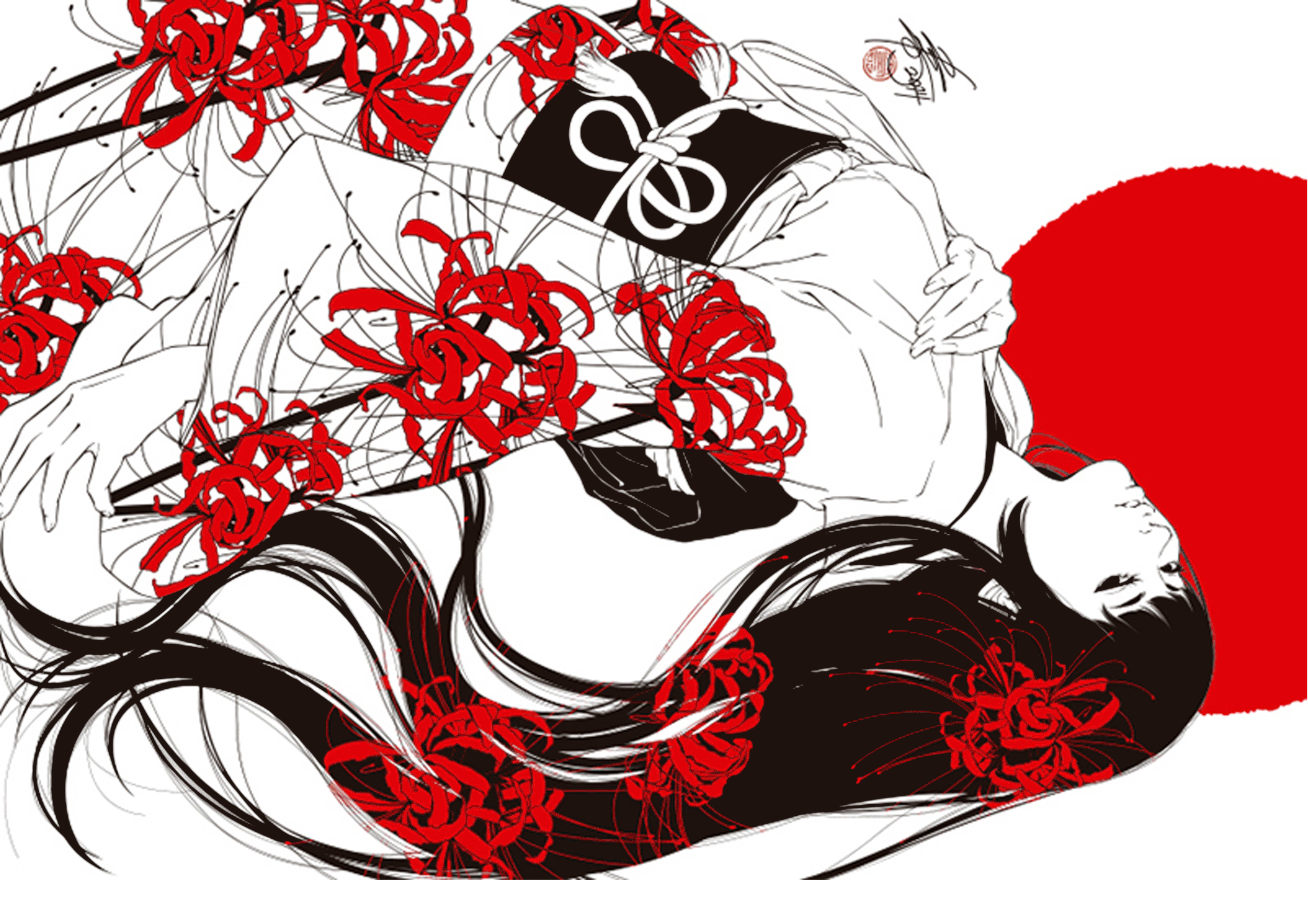The following summer, in spite of the infidelity, your wedding went on as scheduled and was held at a local Shintō shrine.
At Gokoku Jinja, no less. When Haruka and I consulted with the kan’nushi, the Shintō priest who would conduct the ceremony, we were seated in an office, the walls of which were plastered with photos of kamikaze pilots.[1]
Your father and mother and all six of your older brothers and sisters came.
That was really quite good of them—after all, it’s not a cheap trip to make. When Haruka and I were first making plans for the wedding I told her not to get her hopes up, warning her that it might be a small, lonely wedding. But then, to our surprise and delight, the whole Ó Laoghaire Teaghlach[2] showed up and—crack open the saké barrels, kill the fatted tuna—it was time to party! My brother Padraig,[3] in particular, took to celebrating wholeheartedly, and stayed out with me drinking and dancing until the crack of dawn the morning of my wedding.
A rainy mid-July morning it was.
And a terribly, terribly humid one at that. My poor family suffered quietly at the time, but they never pass up the opportunity to rib me about it today. Why don’t you visit Japan again, I’ll ask, and they’ll say something like, “What? To that boiling cauldron of a country? Peadar, how do you say, ‘I think we’ll take a pass.’ in Japanese?”
In spite of the heat, the two of you made for quite a handsome couple with Haruka dressed in a white kimono and you in a black hakama.[4]
I think that was the peak of my looks and it’s all been downhill after I said, “I do.”
As the Kan’nushi waved an ōnusa[5] over your heads and intoned a blessing in archaic Japanese . . .
I turned to Haruka and told her that I loved her.
Did you?
That’s the power of the religious rite: it can really bring a marriage into focus much clearer than a piece of paper at your local Ward Office ever will.
The gods were now watching you.
All eight million of them.[6]
Family, too.
Yes. And our families were now one, as the Japanese say.
[1] Gokoku Jinja, like other “gokoku” shrines in Japan such as the infamous Yasukuni Shrine in Tōkyō, is dedicated to those who ever died fighting for, or defending, Japan. According to the official website of Yasukuni, “When the Emperor Meiji (reign 3 Feb 1867 – 30 Jul 1912) visited Tokyo Shokonsha for the first time on January 27 in 1874, he composed the following poem[:] ‘I assure those of you who fought and died for your country that your names will live forever at this shrine in Musashino’. As can be seen in this poem, Yasukuni Shrine was established to commemorate and honor the achievement of those who dedicated their precious lives for their country. The name ‘Yasukuni’, given by the Emperor Meiji represents wishes for preserving peace of the nation.”
[2] Gaelic for O’Leary Family, pronounced “O Layder Tie-lach”.
[3] Gaelic for Patrick, pronounced “Pah-drik”.
[4] A hakama (袴) is a long pleated skirt-like garment worn mainly by men over a kimono on ceremonial occasions.
[5] An ōnusa (大幣) is wooden wand with white zig-zagging paper streamers known as shidé hanging from it. The ōnusa is waved left and right during Shintō purification rituals.
[6] The Shintō spirits are known collectively as yaoyorozu no kami (八百万の神), an expression which has the literally meaning of “eight million gods”, but actually means “an extremely large number of gods”. The kanji for eight hundred (八百, happyaku, yao) can also mean a very large number of things. The most common word with “yao” in it is “yaoya” (八百屋, lit. eight-hundred shop). A yaoya is a “greengrocer”, or a shop dealing in “a large variety” of vegetable and fruit.
The first installment/chapter of A Woman's Hand can be found here.
A Woman's Hand and other works are available in e-book form and paperback at Amazon.
